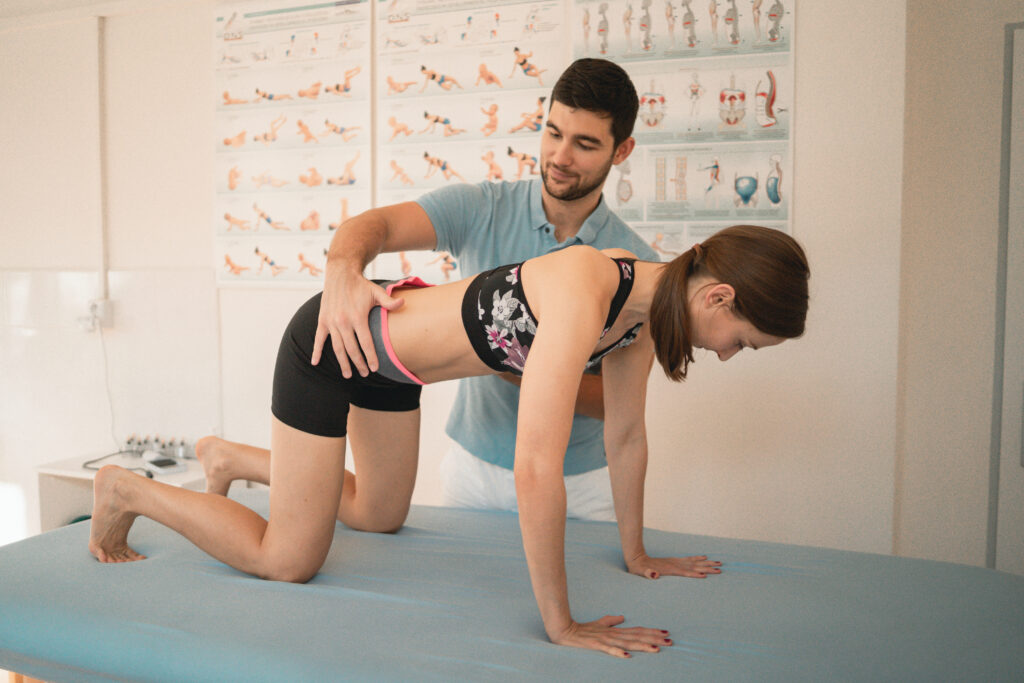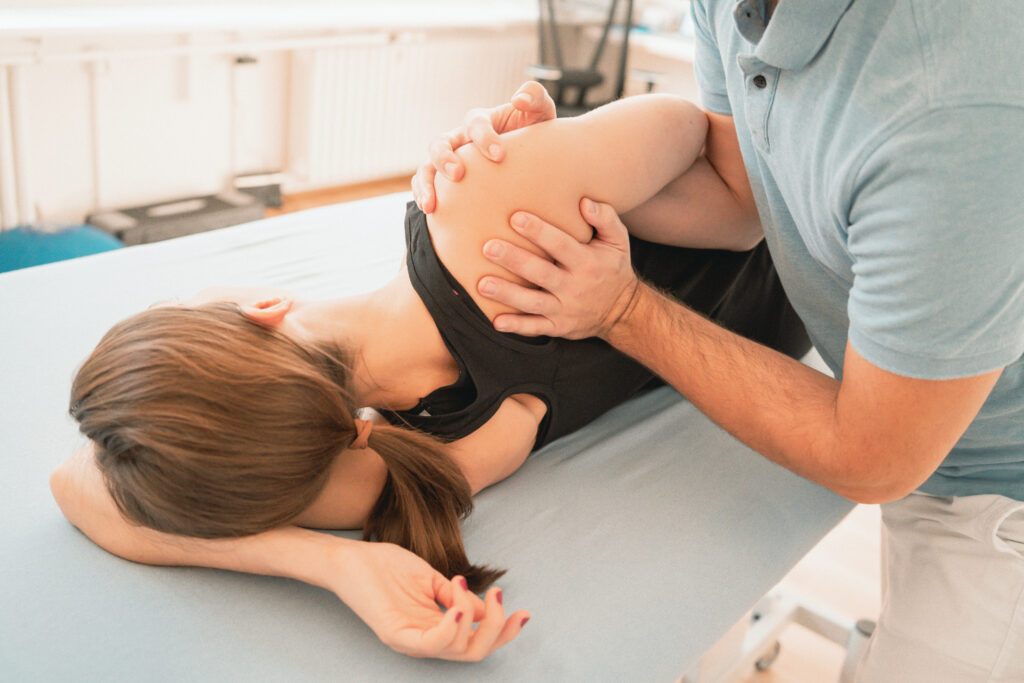Physiotherapy methods
Kinesiotherapy, also known as movement therapy, is the physiotherapist’s main tool for influencing the client’s/patient’s difficulties. There are many kinesiotherapeutic methods today, but the most effective seem to be those based on neurophysiological principles.
Such methods use findings from the fields of neurophysiology and neurology to affect the human musculoskeletal system. In practice: the physiotherapist tries to influence the nervous system by providing a variety of stimuli that activate receptors located in the skin, tendons, muscles, and joints. This then triggers positive activity in the brain and spinal cord, leading to improved intersystem communication.
The result of this complex process is long-term relief or even complete disappearance of movement difficulties. In my practice, I use elements of methods that fully apply the above-mentioned principles. A brief description of the concepts whose elements I use in comprehensive therapy can be found below.

Dynamic Neuromuscular Stabilization (DNS)
This concept was developed by the renowned physiotherapist Prof. Pavel Kolář and probably includes the best elements of various methods, systems, and concepts of the past. It includes both diagnostic and therapeutic components.
The key point of this method is the role of the diaphragm in providing support in static positions (standing, sitting) and during movement (walking, sports). The diaphragm, together with the pelvic floor muscles, deep back and abdominal muscles, creates the deep stabilization system of the spine (DSSS), which plays a crucial stabilizing and protective role during all movements. The DSSS is activated when this method is applied in positions from the first year of human development, where naturally the best conditions for this exist.
A great advantage of DNS is its use for a wide range of movement disorders, both acute (more about acute pain here) and chronic (more about chronic pain here). From my perspective, this method appears to be the best currently used in physiotherapy practice in our country.
Proprioceptive Neuromuscular Facilitation (PNF)
This is a method whose foundations were laid in the 1950s. It was developed by Dr. Kabat and his assistants Voss and Knott.
The principle of this concept is to improve muscle coordination, which is achieved by influencing the receptors in the skin, muscles, tendons, and joints. This is mainly accomplished by applying resistance during movement, which is performed in all axes (3D).
In practice: the physiotherapist manually and verbally guides the client’s/patient’s movement in a diagonal direction (see picture), thus achieving optimal coordinated activation of different muscle groups simultaneously. I use elements of this method especially for post-traumatic and post-surgical joint conditions.


Sensorimotor Stimulation (SMS)
This method owes its origin to the great Czech neurologist Prof. V. Janda and physiotherapist M. Vávrová.
Sensorimotor stimulation uses the principles of motor learning. Its main goal is to restore optimal movement patterns that the brain has stopped using for some reason. This can happen after an injury or as a result of acute or chronic overuse. Simply put, we want to ensure that movement is once again coordinated and as effortless as possible for the body.
We teach the brain to perceive movement and control it, ideally without consciously thinking about it. Various aids are used during exercise, such as balance pads, BOSU, and essentially any kind of unstable surfaces.
Sensorimotor stimulation helps eliminate muscle imbalances, restore optimal movement patterns, and improve posture.
Author: Mgr. Marek Fojtách
Sources:
Kolář P. & Lewitt K. (2005). Význam hlubokého stabilizačního systému v rámci vertebrogenních obtíží. Neurologie pro praxi, 5
Pavlů D. & Holubářová J. (2017). Proprioceptivní neuromuskulární facilitace (1st ed.). Karolinum
Web UTVS CVUT: https://fyzioterapie.utvs.cvut.cz/document/show/id/298/